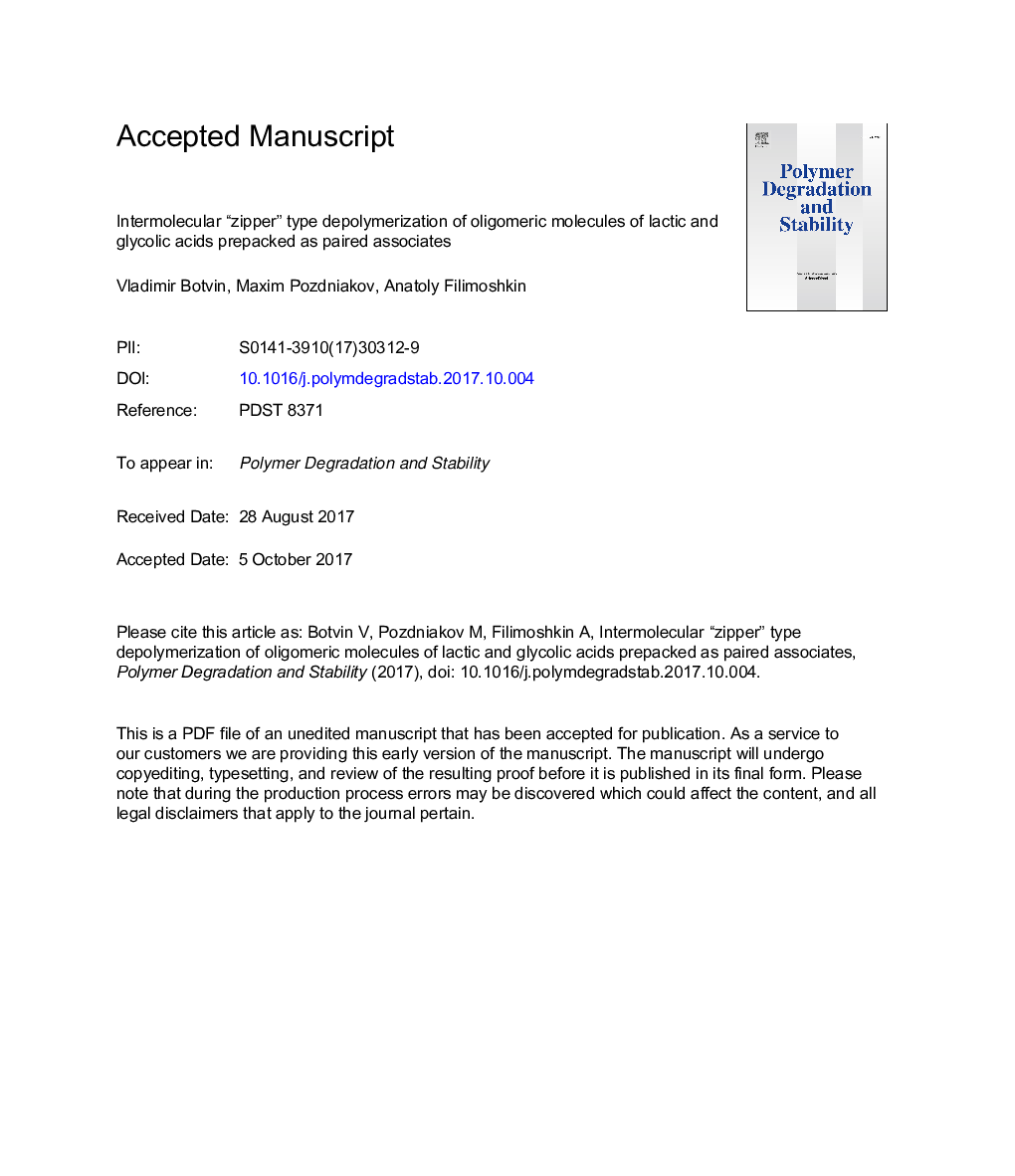| Article ID | Journal | Published Year | Pages | File Type |
|---|---|---|---|---|
| 5200641 | Polymer Degradation and Stability | 2017 | 12 Pages |
Abstract
Lactic and glycolic acids easily form oligomers (n â 2-10), where the adjacent n-mers, adsorbed on a catalyst surface, spontaneously originate paired associates (PAs). Each pair of n-mers inside the PAs undergo a specific destruction at 210-220 °C (9-13 mbar), which includes stepwise chemical interactions within the n-mers resembling the work of a zip-fastener. Unceasing chemical interactions slide within each PA from one end to another. At the same time, the interactions are followed by synchronous release of cyclic diesters, i.e. those of lactide, glycolide or 3-methylglycolide (3-MG), the latter being a hybrid cyclic diester, if the PAs are formed from the n-mers of two different hydroxycarboxylic acids, e.g. of lactic (LA) and glycolic acid (GA). All diesters in this work are identified by NMR 13C [15.8 ppm (CH3), 65.7 ppm (CH2), 72.0 ppm (CH), 165.8, 167.4 ppm (C=O)], GC/MS and IR spectroscopy. If the PAs are formed from n-mers of the same nature, e.g. from (LA/LA) or (GA/GA), the synchronous specific destruction of (LA/LA) or (GA/GA) paired n-mers (depolymerization) results in lactide or glycolide molecules. The process of “zipper” type controlled depolymerization of (LA/GA)-paired n-mers within this reaction route is a new method of synthesis of various hybrid cyclic diesters as monomers for a new generation of biodegradable polymers.
Related Topics
Physical Sciences and Engineering
Chemistry
Organic Chemistry
Authors
Vladimir Botvin, Maxim Pozdniakov, Anatoly Filimoshkin,
